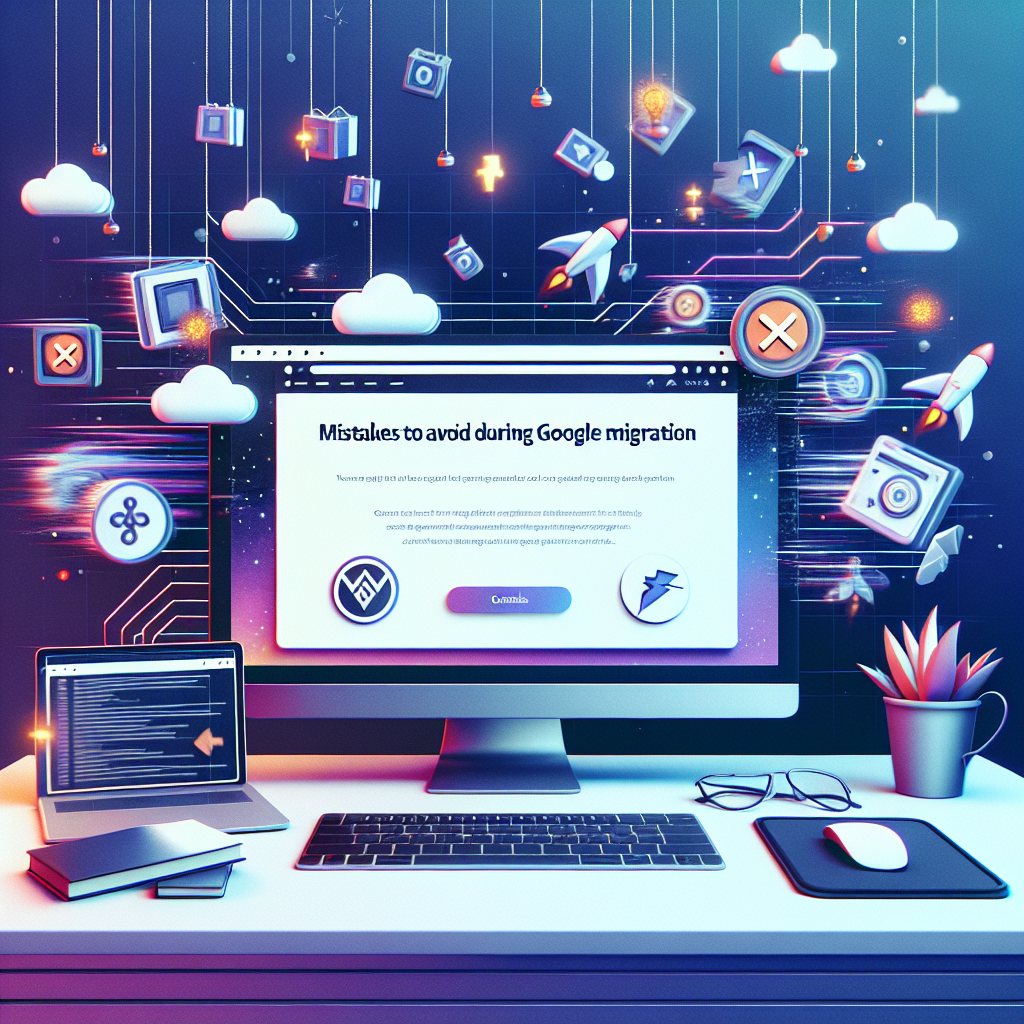Mistakes to Avoid During Google Migration
Migrating to Google Workspace (formerly G Suite) can be a game-changer for businesses looking to enhance productivity, collaboration, and security. However, the process is not without its challenges. A poorly executed migration can lead to data loss, downtime, and frustrated employees. To ensure a smooth transition, it’s crucial to avoid common pitfalls. In this article, we’ll explore the top mistakes businesses make during Google migration and how to steer clear of them—whether you’re handling the process in-house or working with Google migration companies offering managed migration services just like MoveBot.
1. Failing to Plan Properly
One of the biggest mistakes organizations make is diving into a migration without a well-defined plan. A successful Google migration service requires careful preparation, including:
- Assessing Current Infrastructure: Understand your existing email systems, file storage, and third-party integrations.
- Setting Clear Objectives: Define what you want to achieve with Google Workspace (e.g., better collaboration, cost savings).
- Creating a Timeline: Establish realistic milestones to avoid rushed decisions.
Without a roadmap, you risk overlooking critical steps, leading to delays and unexpected issues.
2. Ignoring Data Backup
Data loss is a nightmare scenario during any migration. Some businesses assume that Google’s tools will automatically preserve all their files and emails, but this isn’t always the case. Before initiating the migration:
- Back Up All Data: Use reliable backup solutions to secure emails, contacts, calendars, and documents.
- Verify Backup Integrity: Ensure backups are complete and accessible before proceeding.
Working with Google migration companies that offer managed migration can help mitigate this risk, as they often include backup protocols in their service.
3. Overlooking User Training
Google Workspace introduces new tools like Gmail, Google Drive, Meet, and Docs—each with its own learning curve. Skipping user training can lead to:
- Low Adoption Rates: Employees may resist using unfamiliar tools.
- Decreased Productivity: Without proper guidance, teams waste time figuring out workflows.
To avoid this:
- Provide Hands-On Training: Conduct workshops or online tutorials.
- Offer Resources: Share guides, FAQs, and best practices.
- Encourage Feedback: Address concerns early to smooth the transition.
4. Underestimating Bandwidth Requirements
A migration involves transferring large volumes of data, which can strain your network. If bandwidth isn’t optimized:
- Slow Migration Speeds: The process takes longer than anticipated.
- Disrupted Operations: Employees experience lag or downtime.
Solutions include:
- Scheduling Migrations During Off-Peak Hours
- Upgrading Network Capacity Temporarily
- Using Phased Migrations (moving departments in stages)
5. Skipping a Pilot Migration
Jumping straight into a full-scale migration is risky. A pilot test with a small group helps:
- Identify Potential Issues before they affect the entire organization.
- Gauge User Experience and adjust training or configurations as needed.
Many Google migration service providers recommend this step to ensure a smoother rollout but you can discuss this with our experts when you book a demo call. This only takes 30 minutes so the team can get a clear understanding on your requirements.
6. Neglecting Third-Party Integrations
Most businesses rely on third-party apps (e.g., CRM, project management tools). Failing to check compatibility with Google Workspace can disrupt workflows.
- Audit Integrations: List all connected apps and verify their compatibility.
- Test Post-Migration: Ensure integrations function correctly after the switch.
Some Google migration companies specialize in handling these integrations as part of their managed migration offering. Thankfully, MoveBot support this fully.
7. Poor Communication with Stakeholders
A lack of clear communication can create confusion and resistance. Keep all stakeholders informed by:
- Announcing the Migration Early
- Providing Regular Updates
- Addressing Concerns Promptly
Transparency builds trust and ensures everyone is on the same page.
8. Not Setting Proper Permissions
Google Workspace allows granular control over file and folder access. Overlooking permission settings can lead to:
- Security Risks: Sensitive data exposed to unauthorized users.
- Collaboration Issues: Teams unable to access necessary files.
Best practices include:
- Reviewing Existing Permissions before migration.
- Implementing Least-Privilege Access (granting only necessary permissions).
9. Rushing the Cutover
Switching entirely to Google Workspace too quickly can cause disruptions. Instead:
- Use a Hybrid Approach: Run old and new systems in parallel temporarily.
- Monitor Performance: Ensure stability before fully decommissioning the old system.
10. Choosing the Wrong Migration Partner
Not all Google migration companies are equal. Selecting a provider without proper expertise can result in:
- Cost Overruns
- Unresolved Technical Issues
When evaluating a Google migration service, look for:
- Proven Experience with similar migrations.
- Strong Customer Reviews
- Comprehensive Support (e.g., training, troubleshooting).
Conclusion
A successful Google migration hinges on meticulous planning, proper execution, and avoiding these common mistakes. Whether you opt for an in-house approach or leverage managed migration services from reputable Google migration companies, addressing these pitfalls will help ensure a seamless transition. By prioritizing data security, user training, and stakeholder communication, your organization can fully harness the power of Google Workspace without unnecessary setbacks.
Frequently Asked Questions
FAQ
1. What are the most common mistakes to avoid during Google Migration?
The most common mistakes include inadequate planning, skipping data backups, not training employees on new tools, and failing to test the migration process beforehand.
2. How can poor planning affect a Google Migration?
Poor planning can lead to data loss, extended downtime, misconfigured settings, and disruptions in workflow, ultimately impacting productivity and business operations.
3. Why is employee training important before migrating to Google Workspace?
Without proper training, employees may struggle to adapt to new tools, leading to inefficiencies, errors, and resistance to change, which can delay the migration’s success.
4. Should I test the migration process before fully implementing it?
Yes, testing helps identify potential issues, ensures data integrity, and allows you to refine the process before the final migration, reducing risks of errors or downtime.





